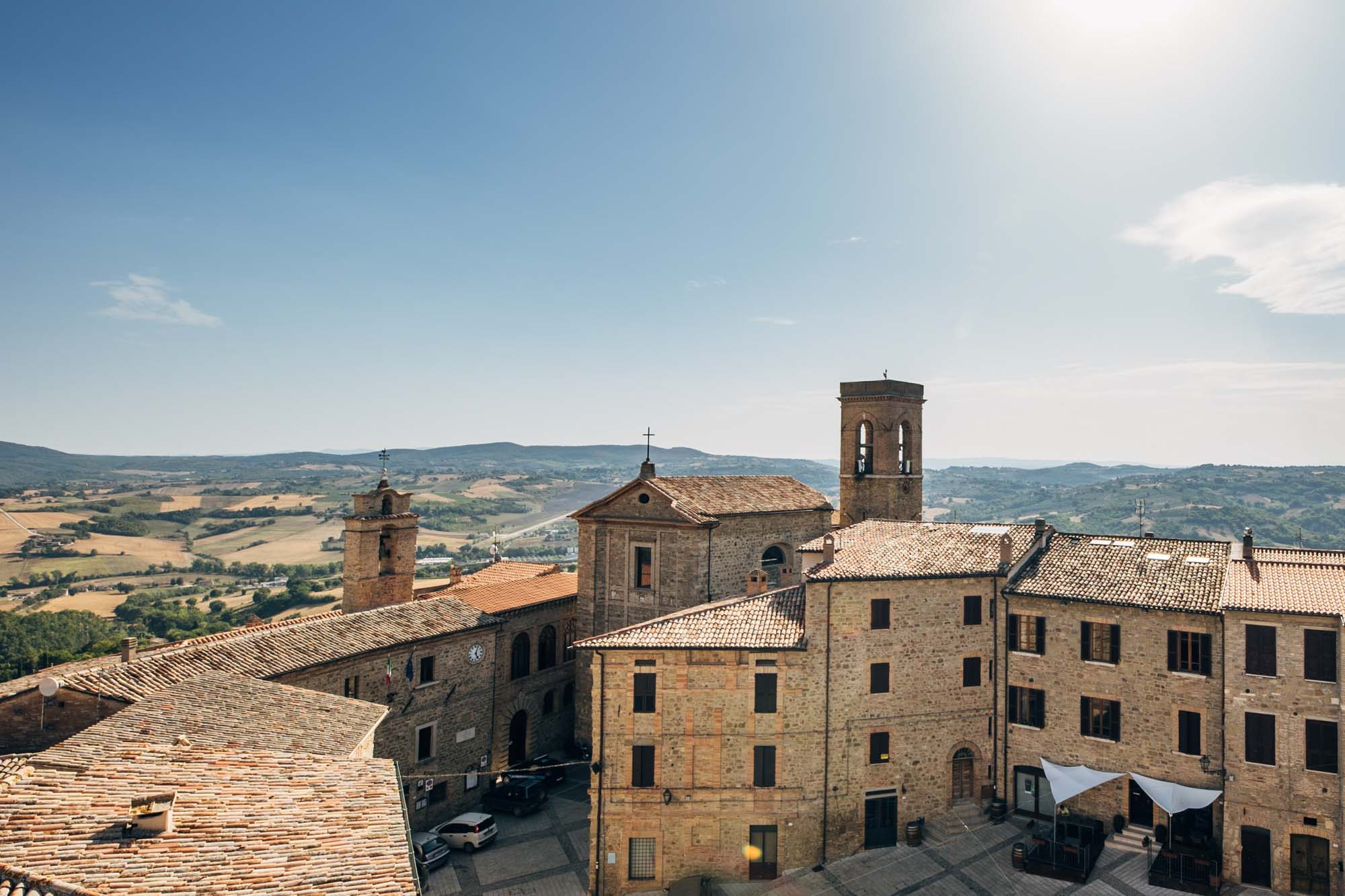
THE VILLAGE OF CASTLES
On the slopes of the Martani Mountains in a panoramic and suggestive position, the territory of Gualdo Cattaneo is worth a visit even outside the ancient city walls. With its fortress, churches and views dotted with woods, it is an excellent starting point to understand the system of castles (fortified fortresses) and medieval constructions located in strategic points to defend the territory.
In fact, these constitute a veritable defensive complex that offers itself to the visitor as an extraordinary open-air museum, set in an olive grove landscape that harmonises perfectly with the softer, more sinuous landscape of the vineyard hills.
After visiting Gualdo and its Rocca, head towards Pozzo, which, surrounded by green olive trees, overlooks the valley of the river Puglia. The architectural layout of the castle offers unique medieval views. Continuing on, the castle of Cisterna (13th c.), on a hill above the Puglia, is in fairly good condition, with its high medieval tower clearly visible, next to which stands a settlement of 19th-century origin. On the border between the municipalities of Gualdo Cattaneo and Giano dell'Umbria you will come across the castle of Marcellano, dating back to the 12th century. During the Christmas period, a living nativity scene takes place there, involving the inhabitants of the entire village every year in traditional scenes of life in the Middle Ages and dozens of costumed figures, craftsmen's workshops, taverns serving hot wine and local gastronomic delicacies. As the pale December sun sets, the Nativity play takes place in a unique setting.
Of supposed Longobard origins is instead the castle of Saragano (a few kilometres from San Terenziano), which was the home of the Roman consul Lucius Lucinius Sura, from whom it perhaps took its name. Due to its singular location in the natural peace of the oak and turkey oak, in an absolute and sacred silence, the castle of Ceralto constitutes a singular synthesis between the site where it is located, the architectural typology and the absolute tranquillity that surrounds it. Near the castle grows one of the largest holm oaks in Umbria, with an estimated age of around 200 years. Not far from Gualdo, the castle of Barattano is perhaps the most striking example of the Gualdo castle system, with its wide walls, narrow alleys and high towers.
From the top of an isolated hill, the castle of Torri dominates the valley below in which the S. Terenziano-Bastardo road runs. An arched entrance door with the coat of arms of the Todi eagle leads inside, where the houses lean against the perimeter circle. On the opposite side stands the castle of San Terenziano (14th century), built to defend the population with a traditional square plan. Inside, the church of the same name is a rare example of a building consisting of two overlapping churches: the lower dating back to the 11th century and the upper dating back to the end of the 13th century.
The itinerary of the castles of Gualdo is completed by the castle of Grutti, halfway between Massa Martana and Todi, of whose medieval structure only a few towers remain; the castle of Speltara, on the road S.. Terenziano-Collazzone road, an abandoned manor with a square plan and a single high corner tower; the castle of Simigni (c. 1103), near the hamlet of Bastardo, now privately owned, the castle of Forte Sorgnano and the castle of Pomonte, which, surrounded by thick vegetation, has a four-sided plan with small towers at the corners.